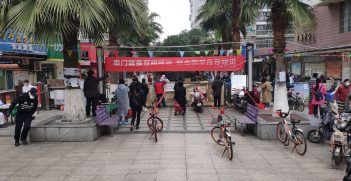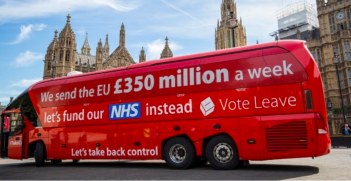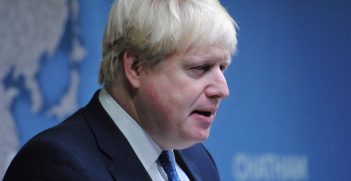Harmful Media Discourses and the Importance of Counterspeech

Freedom of the press is an indispensable part of democracy. But when the press harms the most marginalised in society, a greater focus on nonregulatory, speech-based responses to harmful media discourse is needed.
A free press is a vital component of any healthy democracy. By reporting issues relevant to the functioning of democracy, journalists can hold leaders and politicians to account, as well as circulate the information necessary for the citizenry to make informed political choices.
At the same time, some parts of the press have been known to engage in speech that harms vulnerable societal groups. In the United Kingdom in particular, prominent figures have long voiced concern over media coverage of marginalised demographics. For instance, the final report of the Leveson Inquiry, commissioned after the News of the World phone hacking scandal, noted that it was common for some British newspapers to discriminate against migrants and asylum seekers in their coverage of immigration-related issues. The European Commission against Racism and Intolerance (ECRI) called hate speech against marginalised groups in some British newspapers a “serious problem.” Yet, the Independent Press Standards Organisation, a British press regulator, has previously dismissed complaints about newspaper hate speech on the ground that the Editor’s Code of Conduct does not protect societal groups per se from discrimination, instead protecting only identifiable individuals.
Organisations and charity groups are concerned that there is a link between harmful language about marginalised groups in the media and the incidence of hate crimes against them. Victims of harmful media discourses have reported long-term consequences for themselves and their communities, including feelings of marginalisation and low self-esteem. Harmful media discourses, including those that contain negative stereotypes, tropes, and misrepresentations of marginalised groups, can normalise and perpetuate the oppression that these groups already face. These discourses invoke and subsequently sustain the structures and actions, and the social norms underpinning them, that oppress these groups in the first place.
Harmful speech permeates the Australian media landscape. In 2018, newspapers reported on the alleged existence of “African gangs” in Melbourne. This coverage relied upon racist tropes about the purported criminality of Black men, as well as decades-old myths about Sudanese refugees being “uncivilised,” to deliver its message.
Aboriginal people also bear the brunt of harmful media discourses. Notably, in 2011, Andrew Bolt was found to have breached section 18C of the Racial Discrimination Act 1975 for two articles, written for the Herald Sun, which contained the imputations that some Aboriginal people are not “genuinely Aboriginal” but “falsely identify as Aboriginal” for “career opportunities.” In 2016, cartoonist Bill Leak was widely criticised for a cartoon, published in The Australian, which relied on racist stereotypes about Aboriginal people as “not having any role in raising their children.” Indeed, negative reporting about Indigenous peoples continues today — just under half of the coverage of issues pertaining to Aboriginal people in Australia is negative.
Recently, some British news outlets have alleged that trans women are forcing lesbians into sex, or that incarcerated trans women are “big, brute rapists” who ought not to be in women’s prisons. These kinds of reports rely on, and perpetuate, stereotypes and tropes about transgender women that, wrongly, dominate the social psyche and ensure their oppression — that trans women are not really women, but instead fraudulently present as women in order to harm them.
In addition, harmful discourses about migrants and refugees making their way to the UK have recently regained momentum, including reports of these groups as a financial burden to British taxpayers and that people move to the UK because everything is “free.” These reports rely on decades-old tropes about migrants as “scroungers” who will exploit welfare systems. Because such perceptions of these groups form a part of the oppression they face, invoking and perpetuating these tropes contributes to the ongoing oppression — whether it be transphobic, racist, xenophobic, homophobic, misogynistic — of these groups of people.
The problem, of course, is a familiar one — how ought we solve the problems of the press while simultaneously preserving press freedom? In Australia, although there has been some success combatting harmful media speech through legal avenues, most harmful language goes untouched by regulation, including the so-called “African gangs” discourse. Thus, for some, the answer lies in civil society, speech-based campaigns against harmful speech — also known as “counterspeech.”
In 2018, hundreds protested how crime was being reported in Melbourne. The affected Sudanese community and their non-Sudanese supporters rallied to condemn the way that parts of the media were reporting the alleged crime wave in Melbourne. Others have encouraged boycotts of media platforms that were engaging in the harmful discourse, started hashtag campaigns on Twitter, and written op-eds detailing the harms of the discourse.
In the UK, because the regulation of anti-migrant discourse is unlikely, campaign group Stop Funding Hate has begun agitating for a change in the way that newspapers discuss issues pertaining to marginalised groups. They engage in counterspeech by campaigning for companies to advertise ethically — that is, to refrain from advertising in news publications known to be engaging in harmful speech about marginalised groups. They encourage their supporters to write to companies found to be advertising in these newspapers, and request that they no longer pay for adverts in these publications until a newspaper ceases to engage in harmful speech. Doing so, they allege, encourages those media outlets to change how they report on these issues or risk losing advertising revenue. Indeed, they have already reported success — they contend that a significant reduction in the frequency of anti-migrant headlines in the Daily Express is, at least in part, due to their campaign.
There are risks associated with counterspeech, though. When members of marginalised social groups challenge harmful media discourses, they can expose themselves to further harms, including attacks on their reputation and threats of violence. It can also be unfair to expect that those who are impacted by harmful speech simultaneously bear the responsibility of combatting it. Even where they do challenge these harmful narratives, it’s unclear whether marginalised voices are really “heard” in public debate and afforded the attention they deserve, or whether harmful speech, especially that published in prominent media outlets, unjustly drowns them out. Indeed, for members of marginalised social groups, getting a foothold in public debate on issues that directly affect them can be exceptionally difficult when they are battling against deeply entrenched social norms and the power of the media.
Negative coverage of marginalised societal groups persists in some parts of the media. There is much more to do to combat harmful media discourses like these. While it is incumbent on media outlets to be cognisant of the harm that they can do to marginalised groups, all too often this does not occur. And, as recent history tells us, the regulation of harmful media discourses is unlikely. In most cases, the public are left with the responsibility to challenge it, making counterspeech the only response available for those affected by harmful speech in the media. We therefore ought to place a greater importance on counterspeech as a response, seriously consider how to make these responses effective, and do more to support targeted, marginalised groups who speak out against harmful media discourses.
Molly Murphy is a PhD candidate at the University of Queensland. Their research focuses on freedom of speech, harmful speech, counterspeech, and public discourse.
This article is published under a Creative Commons License and may be republished with attribution.





